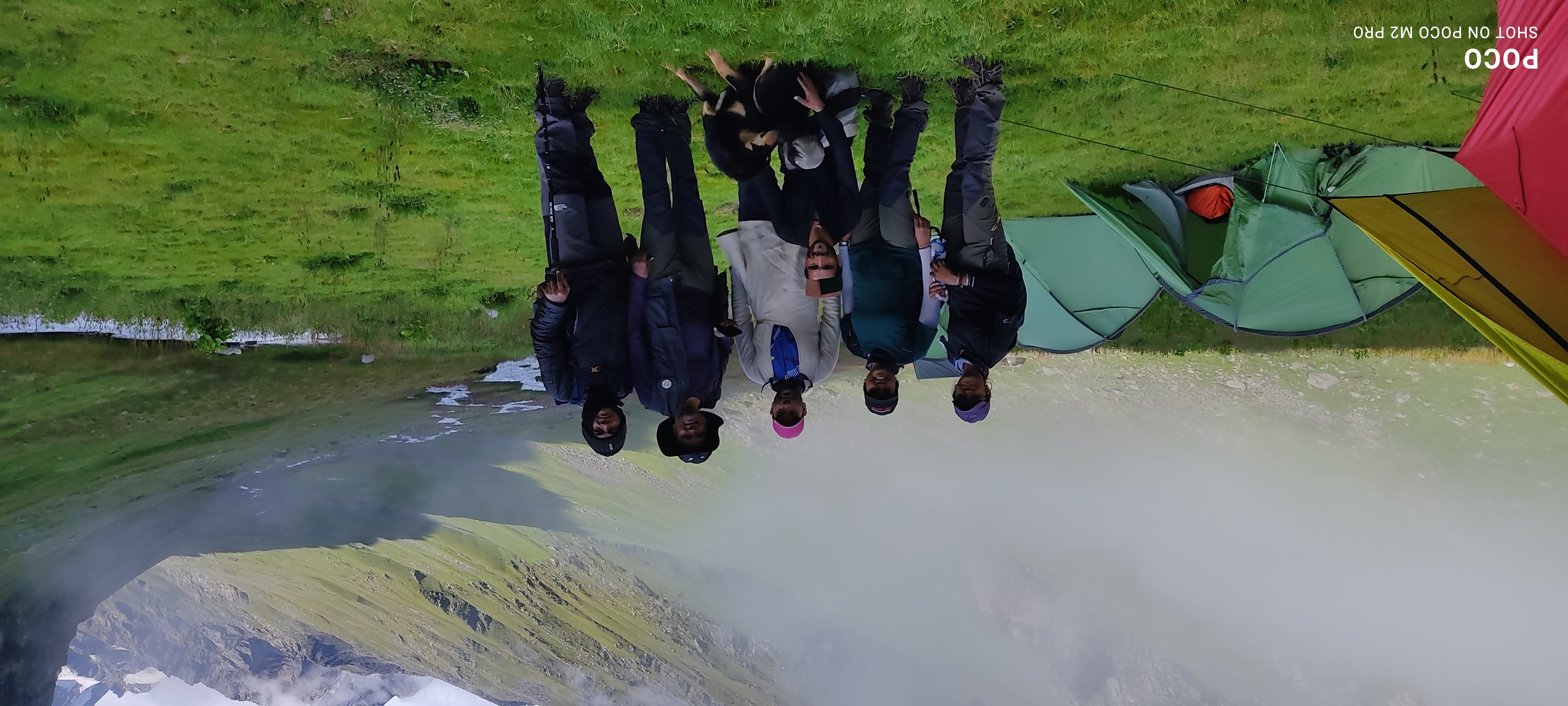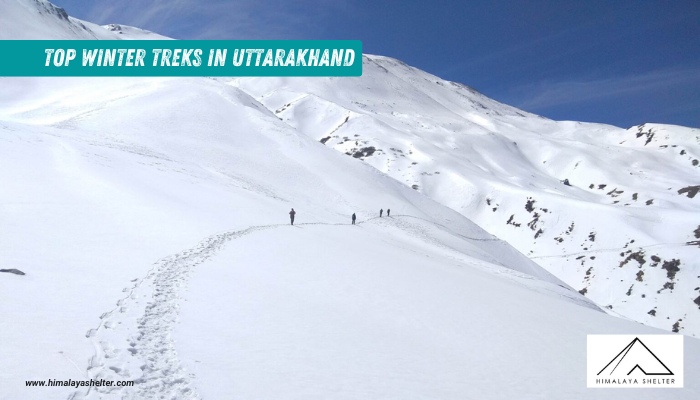
Kalihani Pass Trek
TREK DIFFICULTY
Difficult
TREK DURATION
7 Days
HIGHEST ALTITUDE
15,748 ft
GROUP SIZE
12
TREK DISTANCE
70 km
BASECAMP
Himachal Pradesh
BEST TIME
June to Oct
PICKUP POINT
Himachal Pradesh
Kalihani Pass Trek Overview
Kalihani Pass is a high-altitude pass of Himachal Pradesh. Trekkers love Kalihani Pass Trek as it feels very adventurous. This trek is in the Dhauladhar ranges of the Himalayas. The elevation of this pass is 15,500 feet and the trail to this pass is very beautiful. Trekkers pass through dense forests, beautiful streams, meadows, and snowfields. In clear skies, trekkers can see Indrasan, Deo Tibba, and other beautiful peaks. This trek is rated as a moderate to difficult trek. The ascent to this trek makes it difficult as the trekkers have to walk on rocky moraines, snowfields, etc. The trek starts from Lamadugh near Manali. It takes 8 to 10 days to complete this trek.
Like many other Himalayan treks, Kalihani Pass has been used by Gaddi tribes. These semi-tribal people have been using this pass for centuries for seasonal migration. In early summer, the Gaddi people start moving to high-altitude meadows with their herds for grazing. After the monsoon, they start descending to the lower areas. Today Kalihani Pass is emerging as a favorite destination for trekkers. The trail, the forests, and the views make this trek one of the best treks of Himachal Pradesh.
History of Kalihani Pass Trek
Kalihani Pass has been a trail for the Gaddi people for centuries. Unlike other Himachal Trek, this trek is not very documented in temples or other spots. However, it is an important route for the shepherds. In the local language, Kalihani means Black Valley. It refers to the dark rocks and glacial terrain of the past. From the far, the Kahihani pass trek looks like a big black valley. Some people also refer to this pass as the Black Snow Pass. This pass is never meant for any adventure activities. It was always a measure of livelihood. The Gaddi tribes use this trail to reach high-altitude grazing pastures.
Kalihani Pass is not a popular pilgrimage, but for locals, it is very spiritual. In Himachal Pradesh, people believe in Devta (local deities). They believe their Devtas live in these mountains and protect the villages from any harm. These locals take care of their mountains as their own. The shepherds often leave some offerings and request their Devta for a safe journey.
Highlights of Kalihani Pass Trek
Beautiful meadows of Lamadugh
This trek is very beautiful from a very early season. You will start your trek from Lamadugh and pass through pine and oak forests. You will also see dense deodar forests on the trail. After some ascending, you will see beautiful open meadows. In summer, these meadows fill with wildflowers. You can also spot majestic views of Indrasan and Deo Tibba peaks.
Explore Gaddi Culture
If you plan your trek during early summer or after monsoon then you can witness the seasonal migration of the Gaddi trek. You can see herds of hundreds and thousands of sheep and goats grazing in high-altitude green meadows. It provides a raw experience of the shepherd lifestyle of Himalayan regions.
Beautiful campsites
All the campsites of Kalihani Pass Trek are very beautiful. In clear skies, you will see hundreds of stars over your head. Far from city noises, you will only hear the tinkling sound of sheep’s bells. Some of the higher region campsites may be covered with snow.
Snowfields and glacier walk
This pass is situated at a very high altitude and you might get to see snow till early July. You will start your trek in between lush green forests followed by snowfields and glaciers. Kalihani Pass also offers breathtaking views of Deo Tibba, Hanuman Tibba, and many other high peaks.
The Kalihani Pass is a part of the well-known Bara Bhangal trail. Being close to the thriving town of Manali, the trek offers excellent campsites along with a unique trail that will take you through lush meadows, moraines, snow-laden patches, and a wide variety of wildflowers along the way. You’ll also find stunning views of Mt. Indrasan and Mt. Deo Tibba. The Khanpara Tibba on the way will give you a beautiful view of the Dhauladhar range and the revered elliptical Rani Sui Lake.
Top 10 Highlights of Kalihani Pass Trek:
- Enchanting Flora: Witness meticulously arranged flora, from dense bushes to vibrant meadows adorned with a spectrum of flowers like Marsh Marigolds and Primula.
- Gateway to Remote Bara Bangal: Trek through a historic route leading to the secluded village of Bara Bangal, untouched by modernity, where mules are vital for supplies.
- Tranquil Solitude: Experience minimal trekking traffic, offering a genuine connection with nature and a serene escape from crowded trails.
- Lush Meadows: Revel in lush meadows that maintain their allure, resembling well-maintained gardens as you draw nearer.
- Majestic Peaks: Enjoy awe-inspiring views of the Pir Panjal range and the grandeur of Indrasan and Deo Tibba Peaks.
- Bonus Wonders: Explore Khanpari Tibba for stunning Beas River Valley views and discover the pristine Rani Sui Lake with panoramic mountain vistas.
- The Pass Itself: Conquer the challenging ascent to Kalihani Pass, a rewarding achievement that demands trekking expertise.
- Scenic Landscapes: Marvel at breathtaking views of the Kullu Valley, showcasing its picturesque landscapes.
- Cultural Encounters: Pass through charming villages and remote hamlets, providing opportunities to immerse in local culture and witness the traditional way of life.
- Flora and Fauna: Explore the region's diverse flora and fauna, including Himalayan black bears, elusive snow leopards, graceful musk deer, and captivating bird species.
Difficulty Level Of Kalihani Pass Trek
Kalihani Pass Trek is an adventurous trek and requires great fitness and experience. The trekker should be experienced in high-altitude trekking to do this trek without any risks. Kids under 15 yrs and people with any breathing difficulties should not do this trek.
- High-altitude Pass
The trek starts from Manali and the trekkers gain a lot of altitude very rapidly. They have to ascend from 2000m to 4,800 m in a few days. This ascent requires both physical and mental fitness. You have to trek for long hours every day. People who do not have experience in thin air can also face AMS symptoms like nausea, headache, etc.
- Difficulty Terrain
Kalihani Pass Trek involves different types of terrains. The lower regions pass through forests and meadows. After some ascending, you will start walking on moraine zones and glacial sections. Sometimes, you also have to walk on snow patches which aids the difficulty level of this trek. In early seasons like June, you may need mountaineering gear like gaiters, microspikes, etc to cross certain sections.
- Challenging Navigation
The early section of the trek is properly marked. However, after passing Riyali and Kalihani bases; the navigation became very challenging. The trail is very less marked and poor weather conditions can reduce the visibility. Trekkers should always plan this trek with an experienced trekking company.
Best Time To Visit Kalihani Pass Trek
Trekkers can plan their Kalihani Pass Trek from mid-June to early October. Different seasons offer different terrains and different views. You can plan your trek to Kalihani Pass accordingly.
- Kalihani Pass Trek from Mid-June to Early July
This is a very early season for Kalihani Pass. For people who love snow and seek adventure, this time is best for you. You will find snow patches near the Kalihani pass. The snow in the lower areas starts melting and the grass and wildflowers start appearing. Daytime will be pleasant but nights can be cold and chilly.
- Kalihani Pass from Mid-July to August
The trail will become lush green and beautiful. This is the peak monsoon time and you might get heavy rainfall in the lower regions. The trails will be very slippery and become dangerous. Trekkers may face landslides and flash floods during this season.
- Kalihani Pass Trek from September to Early October
This is the best time to trek Kalihani Pass as the trails become safer. After the monsoon, the sky becomes clear and you can see majestic panoramic mountain views. You can also witness the migration of flocks from high-altitude to lower areas. The landscape starts becoming golden. Trekkers should complete the trek in early October as the snowfall starts near the pass.
How To Reach Kalihani Pass Trek?
Reaching the Kalihani pass trek base is easier than other remote Himalayan treks. The trekkers have to reach Manali to start their trek. Manali is a very famous city in Himachal Pradesh and has good connectivity to many big cities.
- Route 1: Delhi to Manali
Delhi is the capital city and you can find trains and flights to Delhi from almost every place. Once you reach Delhi, you can easily find buses to Manali. The distance from Delhi to Manali is 550 km and it takes 12-14 hours. Take an overnight bus and reach Manali early in the morning.
- Route 2: Chandigarh to Manali
Chandigarh is also a big city and you can find buses, trains, and flights from many locations. After reaching Chandigarh, you can look for HRTC buses. Private bus services are also available for Manali. The distance between Chandigarh to Manali is 300 km and you can cover it in 8-9 hours.
The actual trek starts from Hadimba Temple in Manali. You can take a shared taxi from Manali station to the temple and start your trek.
Day 1: Manali to Lamadugh
You will start your trek from Hadimba Temple in Manali to Lamadugh. It is the base of Kalihani Pass Trek. Trek distance is 10 km and will take about 6-7 hours.
Day 2: Lamadugh to Riyali Thatch
Start your trek from Lamadugh to Riyali. You will gain a lot of altitude and will trek for almost 11 km.
Day 3: Riyali Thatch to Kalihani Base
Start the trek from Riyali Thatch to Kalihani base. This is a bit of tough terrain. You will cover 9 km in about 6 hours.
Day 4: Today you will trek to and from the base to Kalihani Pass.
The total trek distance is about 12 km and will take about 8 hours.
Day 5: Kalihani Base to Dor Nullah
You will start descending from Kalihani base to Dor Nullah via Riyali Thatch. The trek distance is 15 km and will take 6-7 hours.
Day 6: Dor Nullah to Mailee
Start your trek from Dor Nullah and reach Mailee. The distance is 8 km and will take 4-5 hours.
Day 7: Mailee to Manali
Trek from Mailee to Sangchoor for about 6 km. Now, drive from Sangchoor to Manali. The distance is 30 km and will take 2 hours.
Are you looking for experienced and top trekking companies? Well, you are at the right place. Himalaya Shelter is providing you with the best customized services for the Kalihani Pass trek. It is a moderate to difficult trek; our team will take care of you in every step. We have a team of highly experienced guides who will provide you with a well-organized trek along with local experiences.
The Himalaya Shelter team focuses on nature-friendly trekking. Our trek will help you to complete your trek without causing any harm to nature. You can make arrangements as per your requirements. From meals to travel, we will take care of everything. Talk to the Himalayan Shelter team and get the best trekking experience.
Day 1: Manali to Lamadugh | Trek: 10 Km in 6 - 7 hrs
Trek Distance and Duration: 10 km; 6 to 7 hours
Altitude: 2050 m to 3000 m
Accommodation: Camping (Alpine tents)
Meals: Breakfast + Lunch + Evening Snacks + Dinner
Start your walk from Manali after breakfast. You will walk through forests of pine, oak, and deodar. You will hear streams along the path.
The trail goes up slowly. You can see the Kullu Valley below. You cross small, open areas and rocky spots. Then you reach Lamadugh. This is a nice meadow with some wildflowers. The campsite here is quiet.
The air gets cool as evening comes. You get mountain silence. Rest here. Eat a good meal. Get ready for the steady climb tomorrow.
Day 2: Lamadugh to Riyali Thatch | Trek: 11 Km in 6 - 7 hrs
Trek Distance and Duration: 11 km; 6 to 7 hours
Altitude: 3000 m to 3400 m
Accommodation: Camping
Meals: Breakfast + Lunch + Evening Snacks + Dinner
Today, you walk past the tree line and into high grasslands. The trail is gentle but keeps going up. You walk along ridges and see wide views of the valley. Small streams cross the path.
Riyali Thatch is a big meadow. It has soft grass and some wildflowers. This is a perfect spot to camp. You will have a huge sky above you and mountains far off.
Spend the evening telling stories. Rest your feet before you climb to base camp tomorrow.
Day 3: Riyali Thatch to Keliheni base | Trek: 9 Km in 5 - 6 hrs
Trek Distance and Duration: 9 km; 5 to 6 hours
Altitude: 3400 m to 3850 m
Accommodation: Camping
Meals: Breakfast + Lunch + Evening Snacks + Dinner
Start trekking after you eat an early breakfast. The path goes through mountain terrain. You will see rocks and low shrubs. You cross some easy slopes and flat parts. Then you get close to Kaliheni Base.
It sits below steep, rocky slopes and ice tongues. You get great views of the mountains there. The air is colder and thinner. Camp is set up next to fresh water streams. Evening comes quietly. The cold mountain air settles in.
Day 4: Kaliheni base to Keliheni Pass and back Kaliheni base | Trek: 12 Km in 7 - 8 hrs
Trek Distance and Duration: 12 km; 7 to 8 hours
Altitude: 3850 m to 4700 m and back
Accommodation: Camping
Meals: Breakfast + Lunch + Evening Snacks + Dinner
This day will be hard. Follow the trail up steep, rocky ground to Kaliheni Pass. The last part of the climb might have snow. Watch out for loose stones.
At the pass, you can see the Dhauladhar and Pir Panjal mountains. The view is wide in every direction. Take a short break, then carefully walk back down to base camp. Going down takes longer. But it gives you more time to look at the landscape.
Day 5: Kaliheni base to Dor Nullah via Riyali Thatch | Trek: 15 Km in 6 - 7 hrs
Trek Distance and Duration: 15 km; 6 to 7 hours
Altitude: 3850 m to 3200 m
Accommodation: Camping
Meals: Breakfast + Lunch + Evening Snacks + Dinner
Start walking down early. You will head back toward Riyali Thatch. Then you walk into low fields and wooded areas. The walk is long. But it is mostly downhill today.
Dor Nullah is a small valley with mountain grass. It is a quiet place to camp. Water is easy to find there. The valley also gives shelter from the mountain winds.
Day 6: Dor Nullah to Mailee | Trek: 8 Km in 4 - 5 hrs
Trek Distance and Duration: 8 km; 4 to 5 hours
Altitude: 3200 m to 2800 m
Accommodation: Camping
Meals: Breakfast + Lunch + Evening Snacks + Dinner
Start walking down early. You will head back toward Riyali Thatch. Then you walk into low fields and wooded areas. The walk is long. But it is mostly downhill today.
Dor Nullah is a small valley with mountain grass. It is a quiet place to camp. Water is easy to find there. The valley also gives shelter from the mountain winds.
Day 7: Trek to Sangchur and drive to Manali | Trek: 6 Km in 3 hrs; and Drive: 30 Km in 2 hrs
Trek Distance and Duration: 6 km; 3 hours trekking, drive 30 km; 2 hours
Altitude: 2800 m to 2150 m
Accommodation: None (end of trek)
Meals: Breakfast and packed lunch
You will walk down through the forest. The slopes are gentle here. You head toward Sangchur village. This short walk brings you back to the main road.
From Sangchur, a two-hour drive takes you back to Manali. This ends the trek. Think about the days you spent above the trees. And see how the land changed. When you get to Manali, you can settle in for a good, needed rest
Our treks are specially designed by the experienced team at Himalaya Shelter taking you on an adventure of a lifetime all while making you connect not only with the bountiful nature but also with yourself and with others on the trek with you creating wonderful memories which will last you a lifetime. All Himalaya Shelter treks are guided by experienced Trekkers having vast knowledge and experience of the region, providing with insightful information and stories pertaining to the region’s flora and fauna and the history of the region whilst the trek. It is safe to say that on successfully completing the trek one will gain tremendous insight and experience along with lifetime memories.
Trek Inclusions
- Transportation - Support from Manali, Himachal Pradesh
- Accommodation – At Base Camp, stay at a local homestay or guest house for one night each, which will give you an insight into the authentic lifestyle of the locals.( INR 5000 per person extra for single sharing throughout the trek )
On Trek stay in a 2-person Vango Halo Pro/A-Shape tent, which is to be shared by two trekkers, built to withstand extreme weather conditions and at the same time making you comfortable after a hard day’s trek. - Camping Equipment – specially designed sleeping bags that can withstand harsh weather conditions, foam mattresses. Other safety gear like microspikes, gaiters, an ice axe, and helmets will be provided.
- Medical Kit – our team will be equipped with an extensive medical kit, which our team is trained and experienced to use. Oxygen cylinders are used after they are thoroughly inspected throughout the Trek. Even campsites have large oxygen cylinders as backups.
- Permission - Forest entry charges for Indian nationals (Additional charges will be applicable for international tourists)
- Meals – Breakfast, packed lunch (on trek days), evening snacks, and dinner will be served. A hearty, delicious, and nutrition-filled Veg meals with egg preparation will be provided throughout the trek. (Jain and Vegan Food can also be arranged on prior notification.)There will be a dedicated Kitchen Tent along with a dining tent, which will have a dining table too.
- Our Team – A highly experienced and AMC-certified Trek Leader who will help ensure that the entire trek goes smoothly and safely while navigating the challenging conditions during the trek, and is skilled enough to navigate any medical emergency that can arise during the trek. Local and route Guides who are well-versed with the region and provide an in-depth insight into the local customs and knowledge of the flora and fauna endemic to the region. A dedicated Kitchen staff, which includes a Cook, a helper, and other support staff. There will also be porters and mules to carry common equipment.
- Cloakroom - We have a cloakroom facility available for extra luggage. Every trekker is permitted to leave their luggage behind at no charge.
Trek Exclusions
- Personal expenses like tips, personal medicines, phone calls etc.
- Travel Expenses - Travel expenses from your hometown to the mentioned Pick-Up Point are not included in the trek fee.
From the scheduled pick-up spot to the base camp, we have our own fleet of vehicles like Bolero, Innova, Dezire, or Tempo Traveler (12-seater). This is be shared by trekkers for a pre-decided amount. All vehicles are non-AC. - Personal Equipment - Any personal gear like jackets, shoes, cutlery, or backpacks are not included in the trek fee. We recommend renting them from our Rental Store for an affordable fee. This can be pre-arranged to avoid last-minute hang-ups.
- Offloading - We encourage carrying your backpack to get into the true spirit of trekking. However, if needed, you can opt to offload your personal luggage of up to 12 kgs for an additional cost of INR 500 per bag per day.
- Trek Insurance - A mandatory trek insurance fee is charged in addition to your trek fee. Since most medical insurance doesn’t cover adventure activities, trek insurance offers essential coverage, enhancing your safety without a significant financial burden.
- Buffer day on the trek - We have kept a buffer day on the trek to account for any weather-related delay. If this is utilized, you will need to pay an extra amount to your trek leader.
- Anything apart from inclusions
- Please carry a lunch box for a packed lunch/breakfast to avoid using polythene and Aluminium foil.
Keeping the Himalayas clean is our own responsibility. Reduce the use of Plastic when you are in the abode of the Sacred Himalaya. 🌱
The altitude of Kalihani Pass is about 4,800 mts above sea level.
It is a moderate to difficult trek depending on the terrain and weather conditions.
The best time is before and after the monsoon season.
Doing Kalihani Pass Trek solo is not recommended. You should always do this trek in a group.
Read More on Kalihani Pass Trek
Photo Gallery
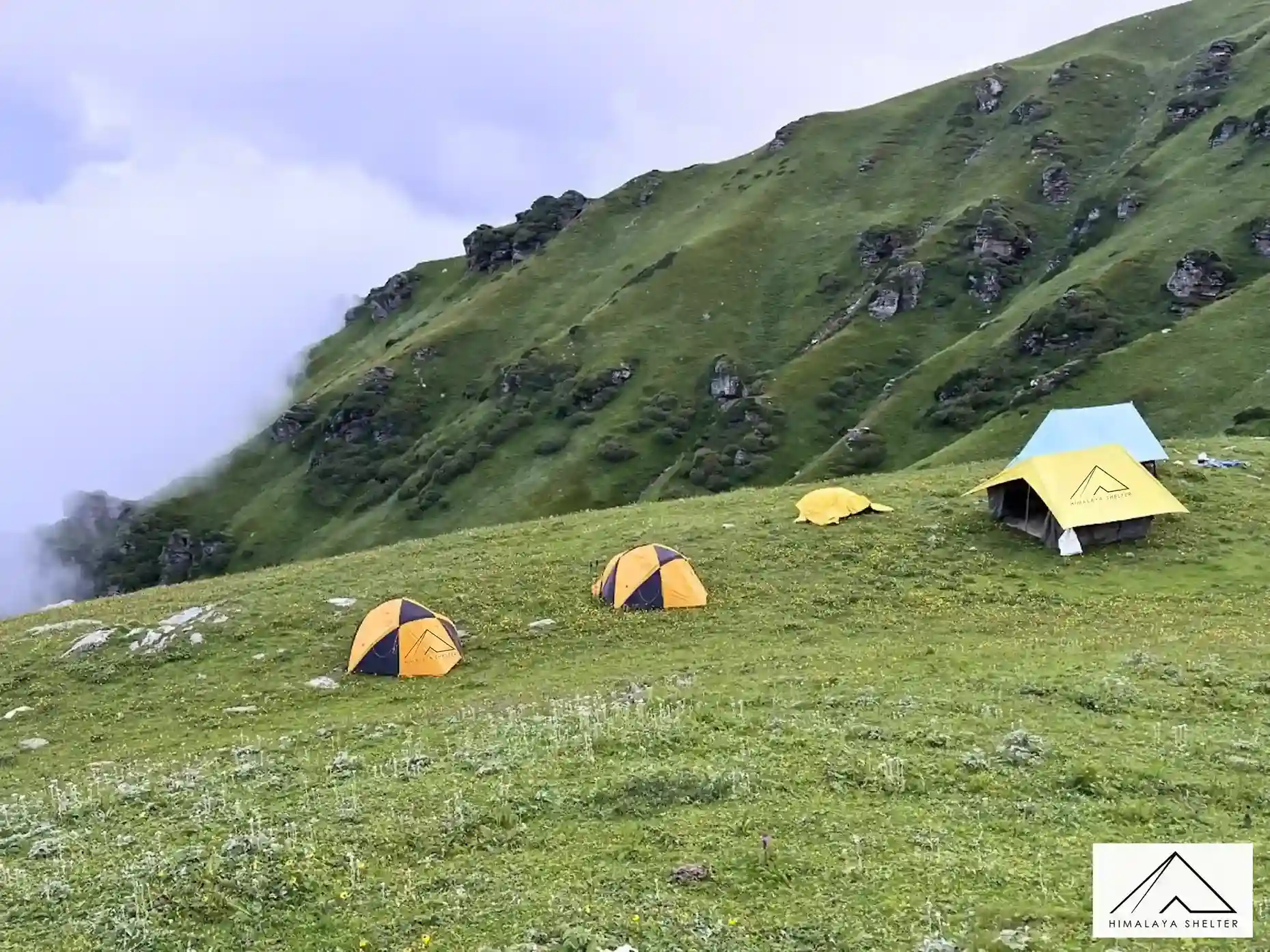

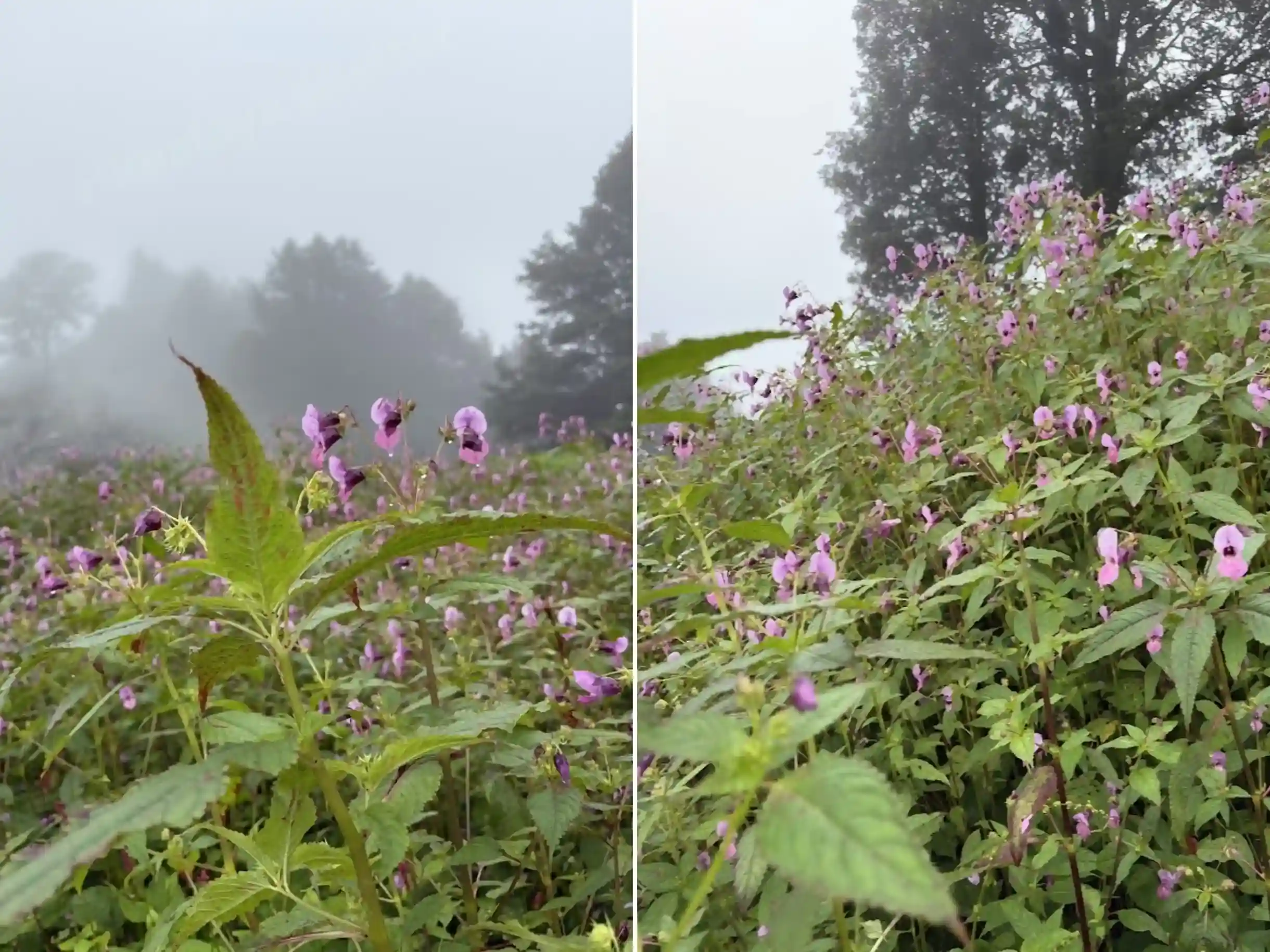


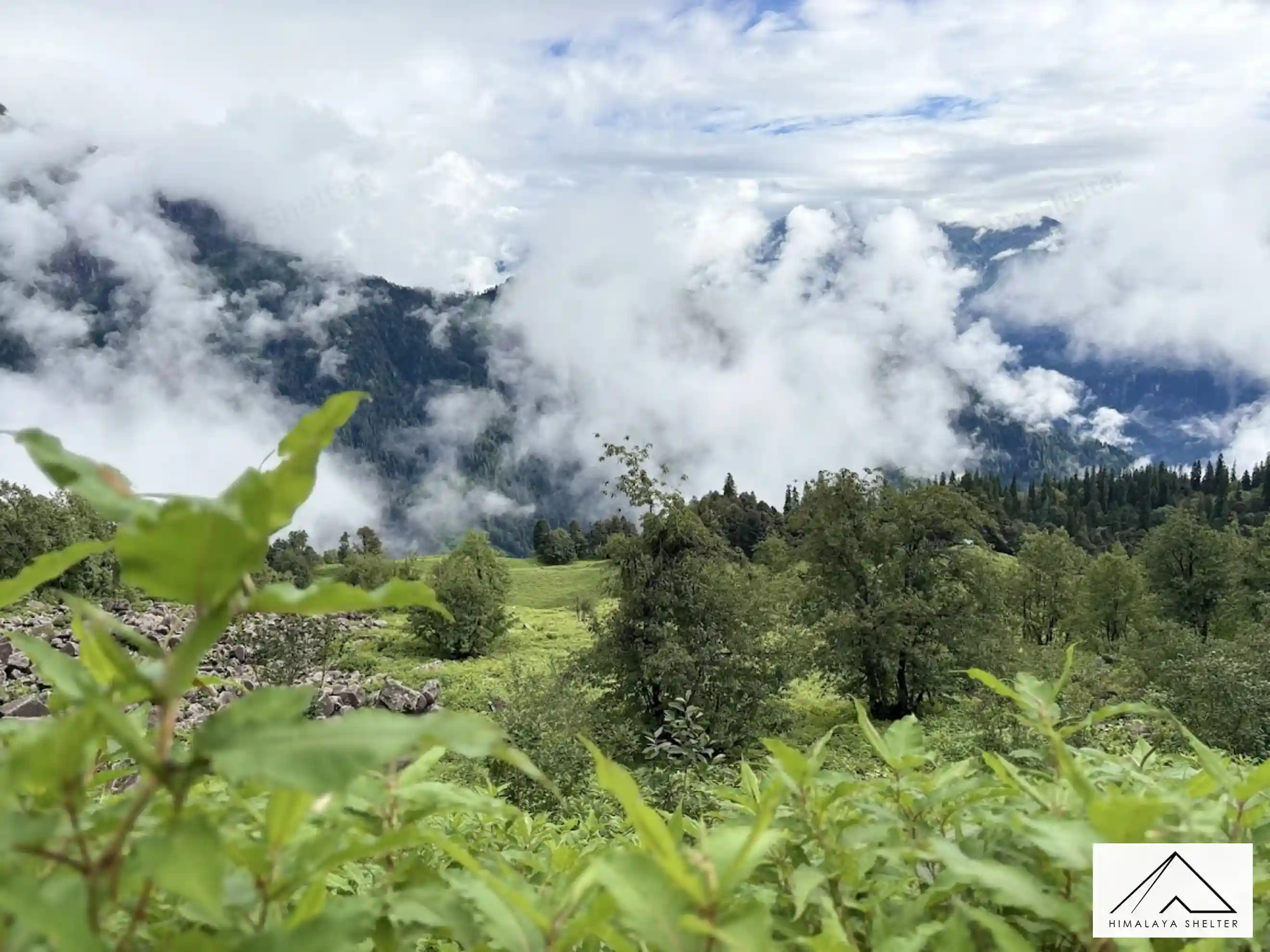
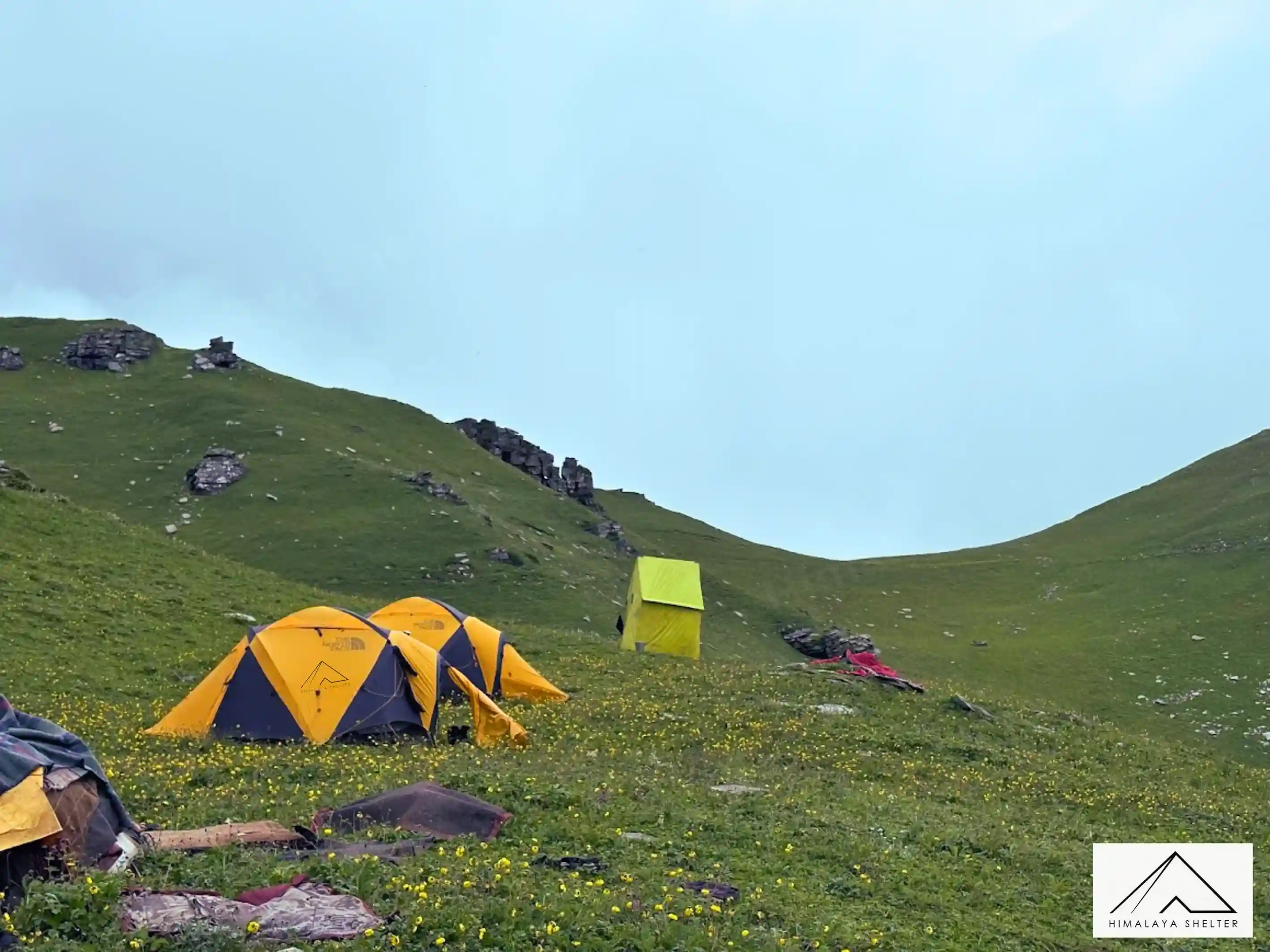
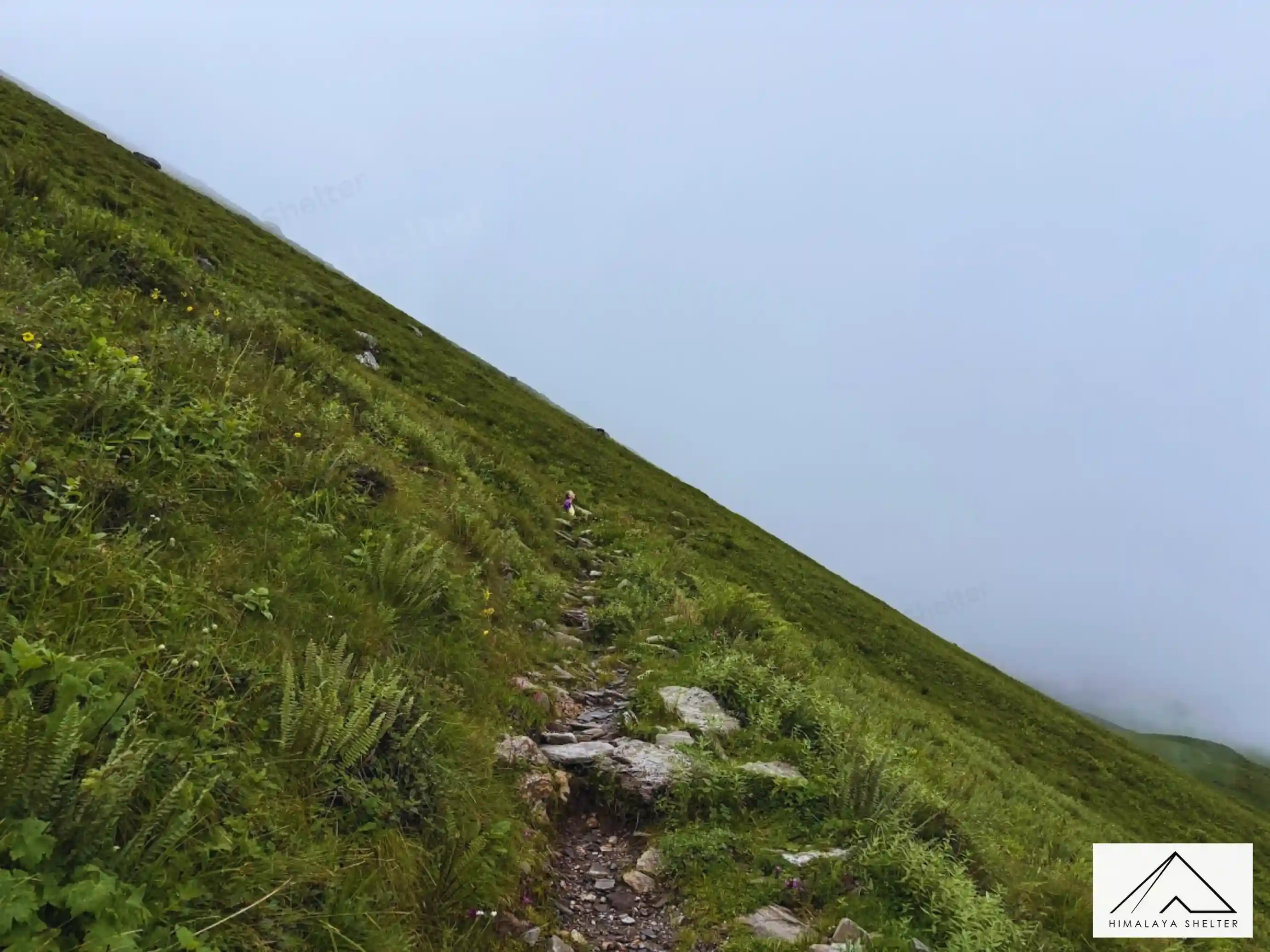
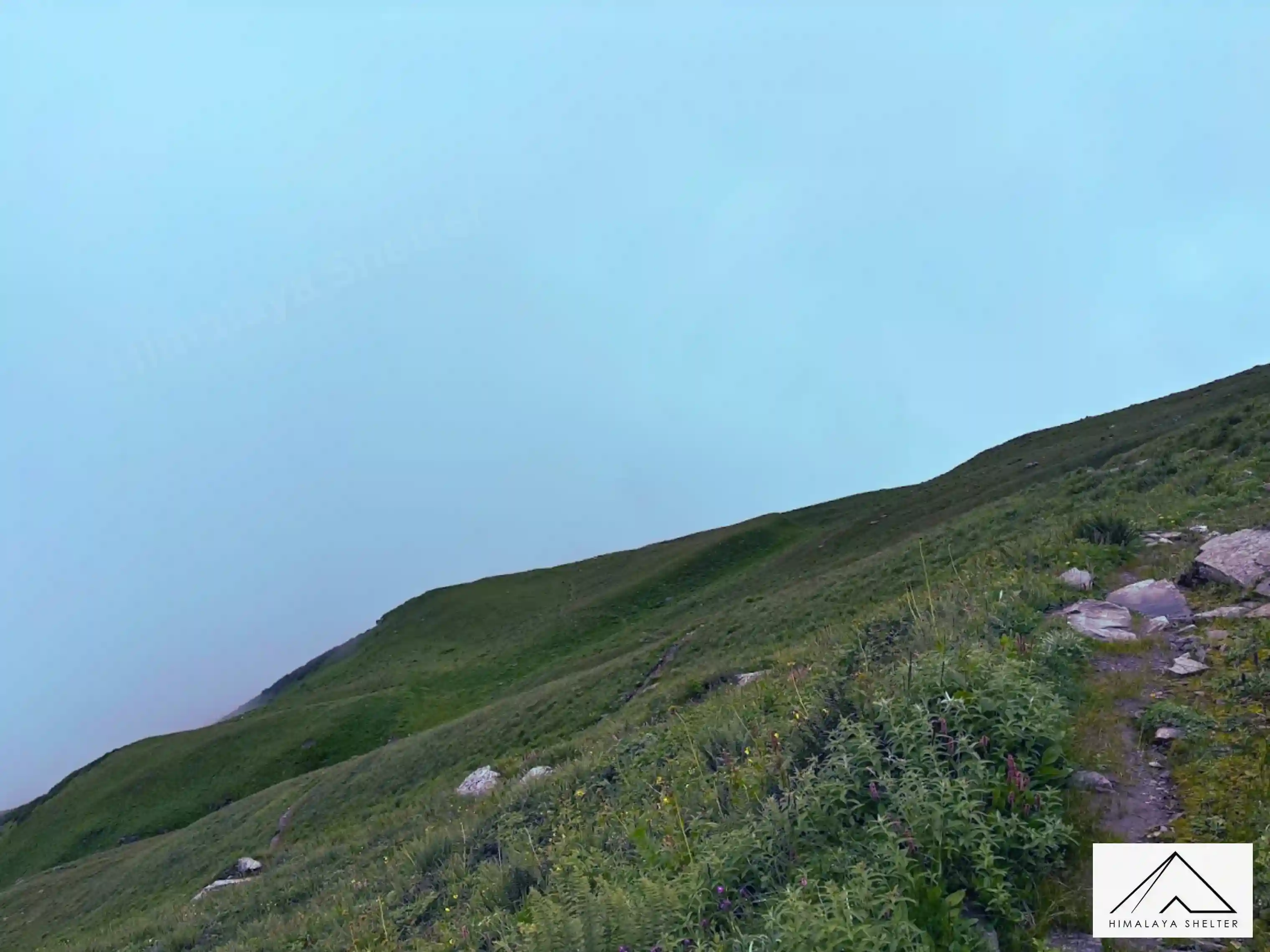

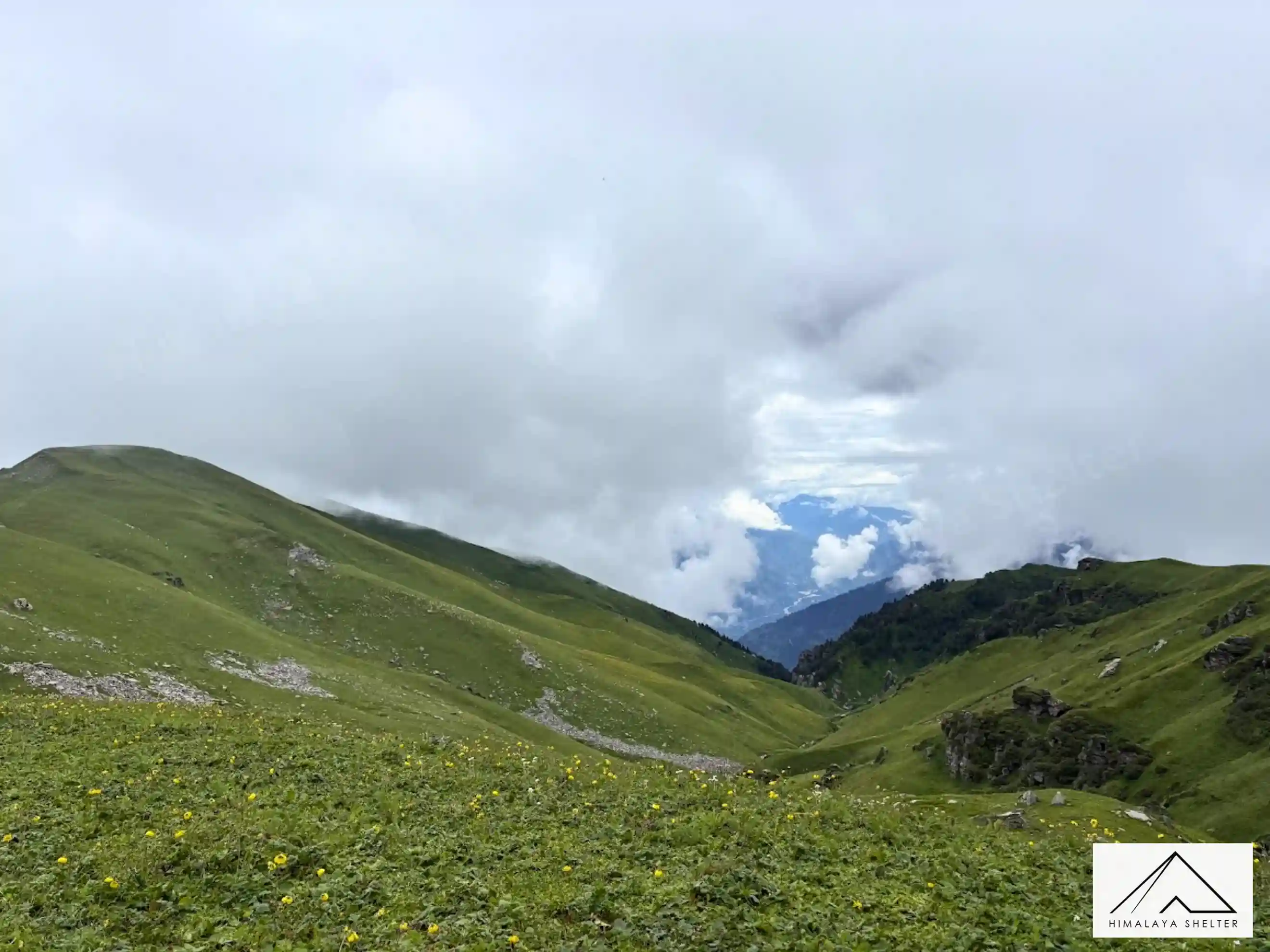
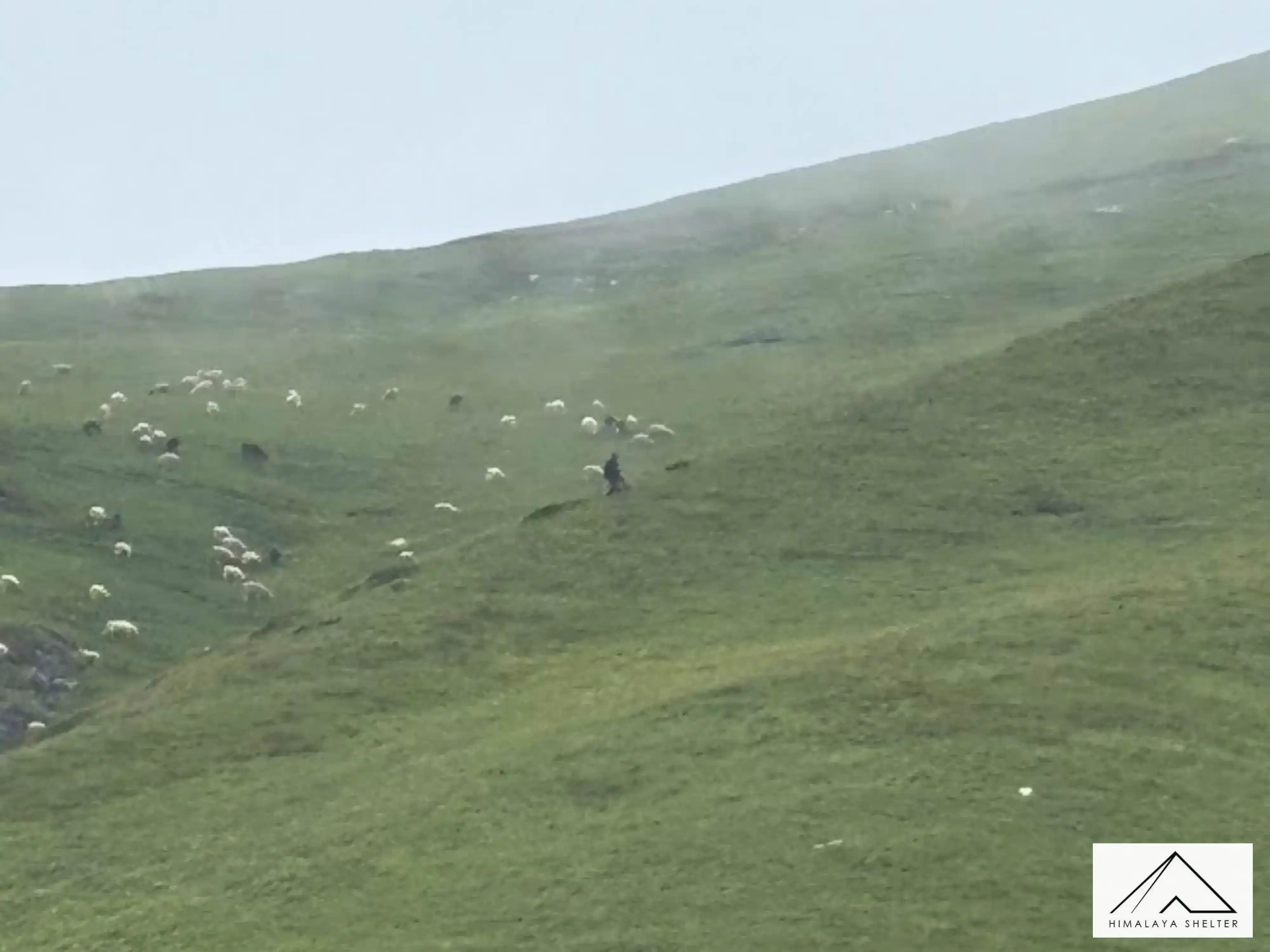
Treks by Categories
Treks By Month

Treks By Experience


